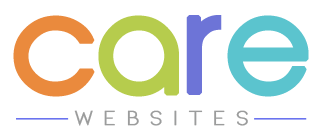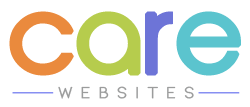Introduction
Establishing a strong online presence is paramount for success in the evolving landscape of home care services. As prospective clients increasingly turn to the internet to find reliable care providers, the development of an effective website becomes a cornerstone of any home care business strategy. However, merely having a website is not enough; it must be optimized to meet the demands of today’s digital environment.
Understanding the importance of website development for home care services
Developing a robust website for home care services is no longer just a luxury; it’s a necessity in today’s digital age. Here’s a detailed breakdown of why website development holds paramount importance for home care services:
-
Accessibility and Information Dissemination
First of all, a website serves as a centralized platform where potential clients can access essential information about your home care services. It acts as a digital brochure, providing details about the types of services offered, staff qualifications, service areas, contact information, and more. This accessibility ensures that individuals seeking home care can easily find relevant information and make informed decisions about their care options.
-
24/7 Availability
Unlike traditional brick-and-mortar establishments with fixed operating hours, a website is accessible round the clock. This means that individuals in need of home care services can explore your offerings at any time, even outside regular business hours. This flexibility caters to the diverse needs of clients who may require immediate assistance or wish to research options at their convenience.
-
Establishing Credibility and Trust
Moreover, a professionally designed website instills confidence in potential clients by portraying your home care agency as reliable and reputable. Features such as client testimonials, staff profiles, accreditation, and certifications can reassure visitors of your expertise and commitment to quality care. Additionally, an informative blog or resource section showcasing industry insights and caregiving tips further establishes your authority in the field.
-
Enhanced Communication and Engagement
Additionally, successful home care websites facilitate seamless communication between home care providers and clients. Interactive features such as contact forms, live chat support, and appointment scheduling tools enable visitors to initiate inquiries or request services directly through the website. This streamlined communication fosters engagement and responsiveness, leading to improved client satisfaction and retention.
-
Targeted Marketing and Reach
Furthermore, using strategic search engine optimization (SEO) techniques, your home care website can attract relevant traffic from individuals actively searching for care services online. By optimizing website content with relevant keywords and location-based targeting, you can increase visibility in search engine results pages (SERPs) and reach your target audience effectively. Moreover, integrating social media links and sharing capabilities expands your reach and encourages referrals from satisfied clients.
-
Competitive Advantage
In a competitive market, a well-designed website can differentiate your home care agency from competitors and position you as a preferred choice for prospective clients. Investing in user-friendly navigation, responsive design for mobile compatibility, and intuitive functionalities demonstrates your commitment to delivering exceptional user experiences. Additionally, regularly updating website content and adapting to emerging trends showcase your adaptability and responsiveness to evolving client needs.
The essentials of successful website development
1.Security
Security is paramount in website development, especially for home care services where sensitive personal and medical information may be exchanged. Here are some key aspects of ensuring website security:
- SSL Certificate: Implementing Secure Sockets Layer (SSL) encryption through an SSL certificate is essential for securing data transmitted between the website and its visitors.
- Regular Security Audits: Conducting regular security audits helps identify vulnerabilities and potential threats to the website.
- Strong Authentication: Implementing strong authentication measures, such as multi-factor authentication (MFA) for administrator accounts, adds an extra layer of security against unauthorized access to the website’s backend.
- Data Encryption and Storage: Ensuring that sensitive data, such as client information and medical records, is encrypted both during transmission and storage adds an additional layer of protection against unauthorized access.
-
Speed
Website speed is a critical factor that directly impacts user experience, search engine rankings, and overall performance. Here’s how to optimize website speed:
- Optimized Images and Multimedia: Compressing images and multimedia files reduces their file size without significantly compromising quality, resulting in faster loading times.
- Minified Code and Scripts: Minifying HTML, CSS, and JavaScript files reduces their size by removing unnecessary characters and whitespace, resulting in faster download times for website visitors.
- Optimized Server Configuration: Utilizing high-performance web servers, optimizing server-side configurations, and leveraging caching mechanisms such as opcode caching and object caching improve server response times and overall website performance.
- Mobile Optimization: Ensuring that the website is optimized for mobile devices is crucial, as mobile users expect fast and responsive experiences.
-
Performance
Website performance encompasses various factors, including speed, responsiveness, and reliability. Here are some essential aspects of optimizing website performance:
- Scalable Architecture: Designing a scalable website architecture ensures that the website can handle increasing traffic and user interactions without compromising performance.
- Efficient Code and Design: Writing clean, efficient code and adopting best practices in web design and development optimize website performance.
- User Experience (UX) Optimization: Enhancing user experience through intuitive navigation, clear calls-to-action, and fast loading times improves website performance metrics such as bounce rate and conversion rate.
- Performance Monitoring and Optimization: Implementing performance monitoring tools and metrics allows for continuous evaluation and optimization of website performance.
| Visit our website to learn more about Website design and Search Engine Optimization! |
What to Refrain from doing
When developing a home care website, it’s crucial to avoid certain pitfalls that can undermine its effectiveness and credibility. Here’s what to refrain from doing:
-
Ignoring Security Measures
Neglecting to prioritize website security can leave the site vulnerable to cyber threats and compromise sensitive client information. Refrain from overlooking security measures such as SSL encryption, regular security audits, and strong authentication practices.
-
Overloading with Unnecessary Features
While it’s tempting to incorporate a multitude of features and functionalities into the website, overloading it with unnecessary elements can clutter the user interface and slow down performance. Refrain from adding features that don’t serve a clear purpose or detract from the user experience.
-
Neglecting Mobile Optimization
With an increasing number of users accessing websites on mobile devices, neglecting mobile optimization can lead to a poor user experience and hinder engagement. Refrain from designing a website that isn’t responsive or mobile-friendly, as it can drive away potential clients.
-
Ignoring Page Load Speed
Slow-loading pages can frustrate users and lead to high bounce rates. Refrain from neglecting page load speed optimization, as it directly impacts user satisfaction and search engine rankings. Avoid large, uncompressed media files, excessive use of scripts, and inefficient server configurations that contribute to slow loading times.
-
Lack of Clear Call-to-Action (CTA)
Failing to provide clear calls-to-action can result in missed opportunities for conversion. Refrain from cluttering the website with too many CTAs or burying them within the content. Instead, strategically place prominent CTAs that guide visitors toward desired actions, such as contacting the home care agency or scheduling an appointment.
Conclusion
In conclusion, developing a successful home care website requires a strategic approach that prioritizes security, speed, and user experience. By implementing robust security measures, optimizing website speed, and focusing on performance enhancements, home care agencies can build trust with clients and differentiate themselves in a competitive market.
Frequently Asked Questions (FAQs)
-
How do I know if my personal information is secure on your website?
We prioritize your security by employing SSL encryption and regular security audits to safeguard your data.
-
How quickly can I expect a response if I contact your home care agency?
We strive to respond promptly to all inquiries within [specified timeframe], ensuring timely assistance and support.
-
What types of services does your home care agency offer?
Our comprehensive range of services includes [list services], tailored to meet your specific needs and preferences.
-
Can I schedule appointments or request services online?
Yes, our website offers convenient online appointment scheduling and service request forms for your convenience.
-
Are your caregivers licensed and trained?
Absolutely, our caregivers undergo rigorous training and possess all necessary licenses and certifications to provide top-quality care.








